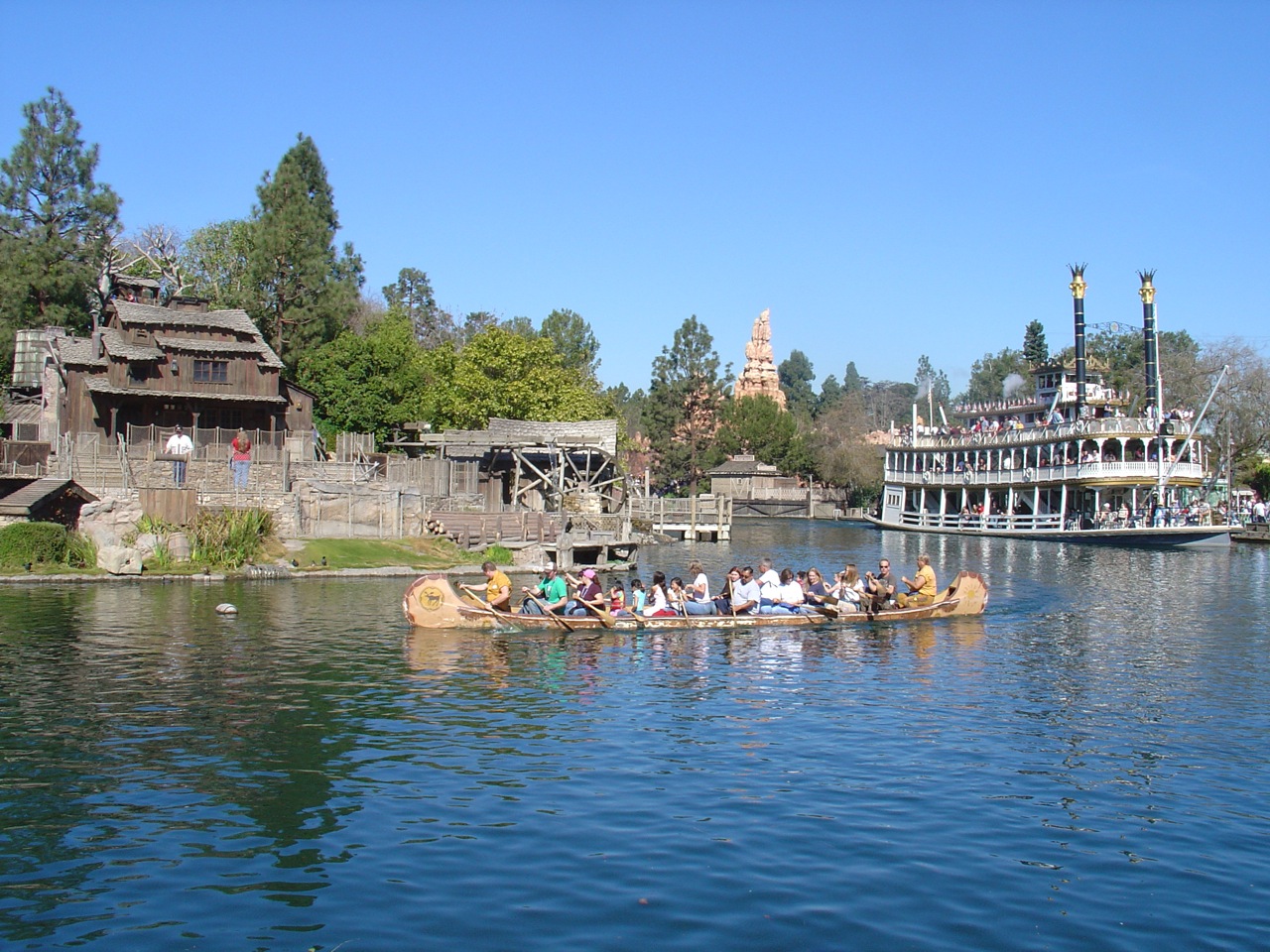In a few days, Disneyland is closing some attractions—most of them in Frontierland—to make way for construction of a new Star Wars themed area. The Disneyland Railroad, Davy Crockett’s Explorer Canoes, Mark Twain Riverboat, Sailing Ship Columbia, and Tom Sawyer Island Pirates’ Lair will be out of commission for at least a year, while the Big Thunder Ranch Jamboree, Petting Farm, and a frontier-themed BBQ restaurant are shutting down for good.

All the American Wests collide in Frontierland, from Twain’s Mississippi to the desert Southwest. By Chuck, aka SolGrundy on Flickr – https://www.flickr.com/photos/solgrundy/ (https://www.flickr.com/photos/solgrundy/380968586/) [CC BY-SA 2.0 (http://creativecommons.org/licenses/by-sa/2.0)%5D, via Wikimedia Commons
For kids of my parents’ and grandparents’ generation, the American frontier was the setting for a lot of the mass media they consumed and the toys they played with, whether they were listening to cowboy-themed radio shows in the 1930s or watching the wildly popular Davy Crockett serial on the Disneyland TV series in the 1950s. The Crockett serial starring Fess Parker was so popular that it became a bona fide part of the Zeitgeist for children of the 1950s. According to the L.A. Times, at the height of Crockettmania, parents were buying 5,000 coonskin caps per day. The same article reports that Disney moved some $300 million in Crockett-themed merchandise before the whole thing ran its course. I ran that figure through some inflation calculators. Turns out $300 million in 1955 would be the equivalent of $2.6 billion in 2015. To put that in perspective, it’s more than the 2013 merchandising revenue from Spider-Man, the Avengers, Batman, and Superman combined.
I can’t think of any historical-themed franchise aimed at kids from my generation or since that has had that kind of popularity. Sure, I had a few Western-style cap guns, pirate swords, and toy rifles when I was a kid. But the dominant media and toys of my childhood took fictional universes as their setting, not the frontier or some other historical era. Instead of Crockett and the Swamp Fox, we had He-Man and Han Solo. By the time my generation of kids came along, moviemakers and toy manufacturers had traded in the West for Eternia and Tatooine. Same thing goes for today’s kids, whose cultural touchstones are the fictionalized worlds of Star Wars, Harry Potter, and so on.
I don’t intend this to come across as a “kids-these-days-don’t-know-their-history” rant. It’s not that children of the seventies, eighties, nineties, and 2000s were any more susceptible to mass marketing or any less susceptible to a fascination with the past. It’s just that the media and products aimed at kids have changed. There aren’t any historical TV shows that can command the kind of market share ABC’s Disneyland show had sixty years ago, when there were fewer channels and the whole country was watching the same programs.
And despite the popularity of “historical” shows like the Crockett and Swamp Fox serials, I don’t think anybody would argue that they helped kids of the 1950s to develop any sort of historical sensibility. The people and events depicted in these old programs bear little in common with their historical counterparts. Indeed, Frontierland itself isn’t even a fictionalized depiction of any particular time or place. Instead, it’s an imaginative evocation of all the different Wests of our imaginations: the palisaded forts of Crockett’s trans-Appalachian frontier, the steamboats of Twain’s Mississippi, the saloons and dance halls frequented by cowboys and gunslingers, and the dusty mining towns of the Southwest.
Still, exposure to a fictionalized past can help spark an interest in the real one. Perhaps a history-themed entertainment franchise with the sort of popularity enjoyed by Harry Potter or Star Wars would create a new generation of budding historians. As things stand now, though, I doubt that a major theme park built in the 2010s would devote an entire themed area to the frontier. An amusement park with a Frontierland made sense in the 1950s, but the West just doesn’t have the same hold on kids’ imaginations that it did in the days of Roy Rogers and Fess Parker. The past isn’t the mass-marketed playground it used to be.
